Ah, the hyacinth! One of my all-time favorite spring flowers. With their captivating fragrance and delightful array of colors, they’re a must-have in any garden or home.
If you’re thinking about adding some hyacinths to your floral collection or simply want to learn more about these beautiful blooms, you’ve come to the right place.
Let’s dive into the wonderful world of hyacinths, shall we?
Benefits of Growing Hyacinths
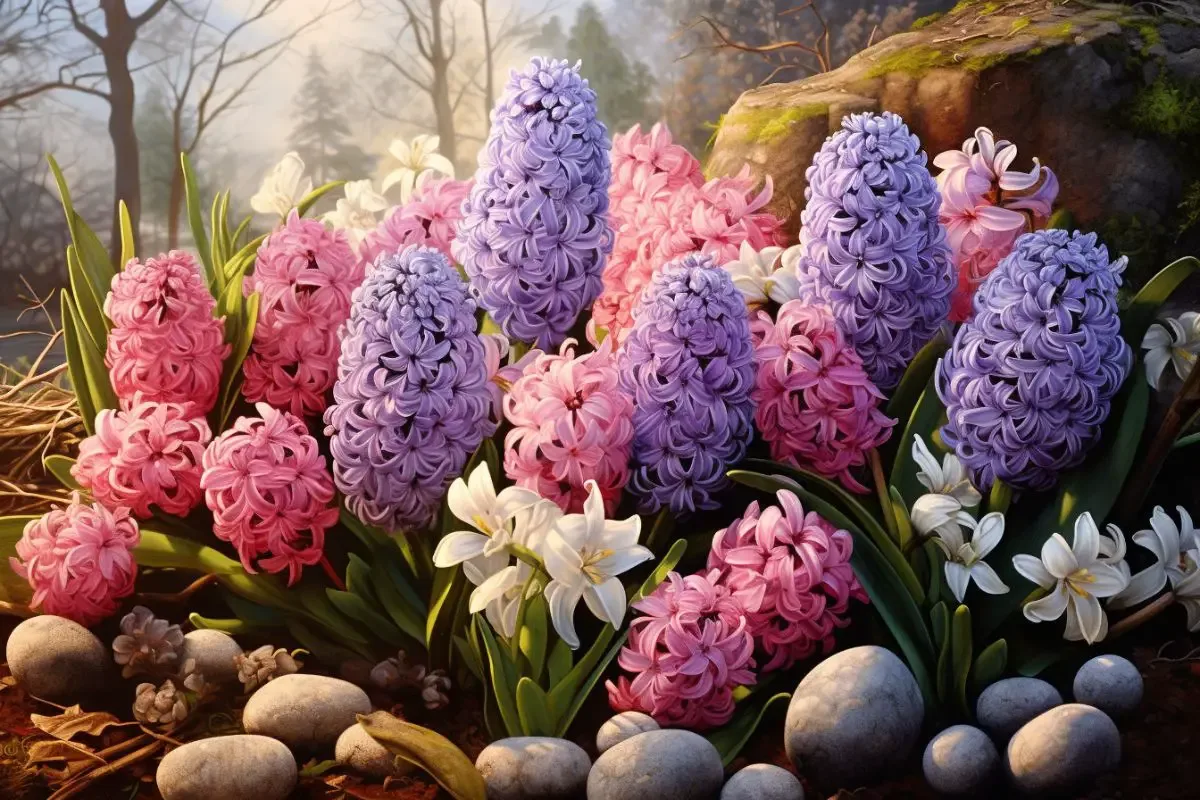
1. A Symphony of Fragrance
One of the primary reasons I adore hyacinths is their intoxicating scent. Just a single plant can fill an entire room or garden space with its sweet aroma. I can’t tell you how many times I’ve had friends or neighbors stop in their tracks, take a deep breath, and ask, “What is that amazing smell?” Hyacinths, my dear readers, are nature’s perfume.
2. Compact Beauty
For those of you with limited garden space, hyacinths are a blessing. They don’t require much room, but they pack a visual punch. Their tightly clustered flowers make a dramatic display, ensuring they stand out even in the most crowded flower bed.
3. Easy to Grow
One of the joys of hyacinths is that they’re relatively low maintenance. Once planted, they don’t need much fussing over. Plus, they’re hardy and can thrive in various conditions. For beginners or those who don’t want to play the “high-maintenance plant game,” hyacinths are a fantastic choice.
My Favorite Hyacinth Varieties
Choosing my favorite hyacinth varieties is a bit like choosing a favorite child, but for the sake of this article, I’ll narrow it down to three that always make my heart sing.
1. Woodstock
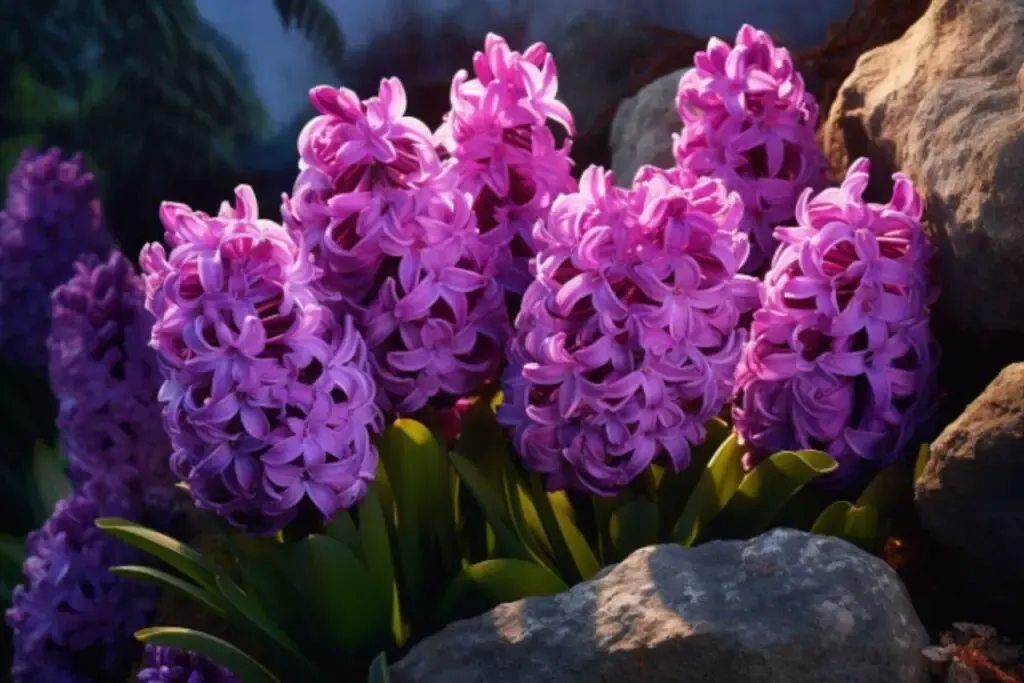
This variety boasts rich, deep purple blooms that look absolutely regal. ‘Woodstock’ adds a touch of luxury to any garden, and its scent is just as enchanting as its appearance. Every spring, I eagerly await its blooms, and it never disappoints.
2. City of Haarlem
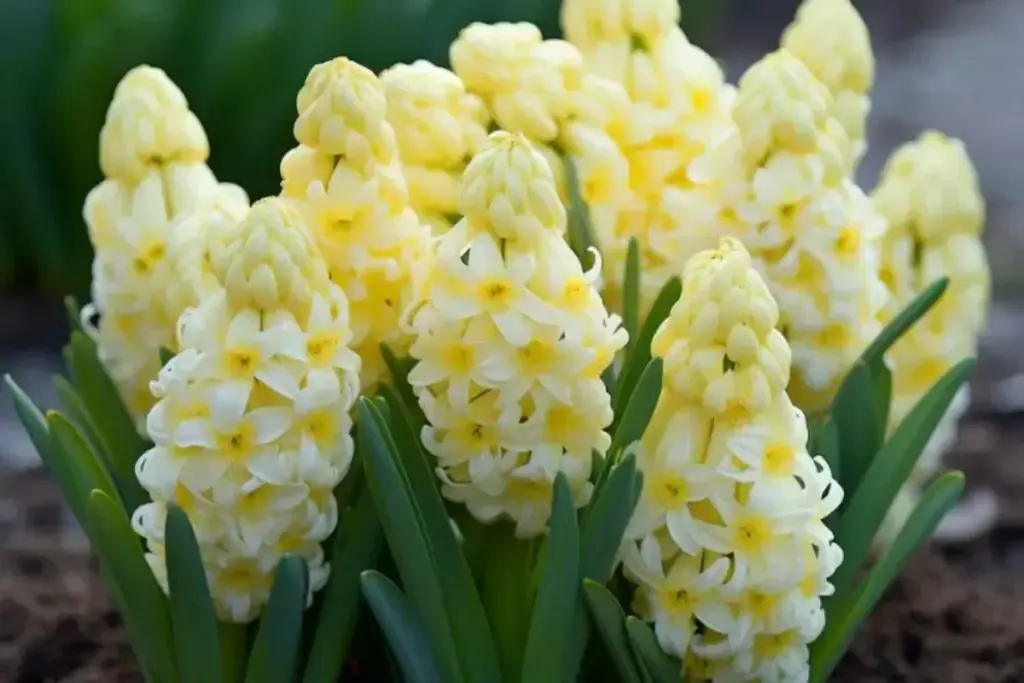
A vintage gem! This hyacinth has soft, buttery yellow flowers that seem to glow when the sunlight hits them. It’s like a little ray of sunshine in your garden. And guess what? Its fragrance is gentle and soothing, making it perfect for those who prefer subtle scents.
3. Pink Pearl
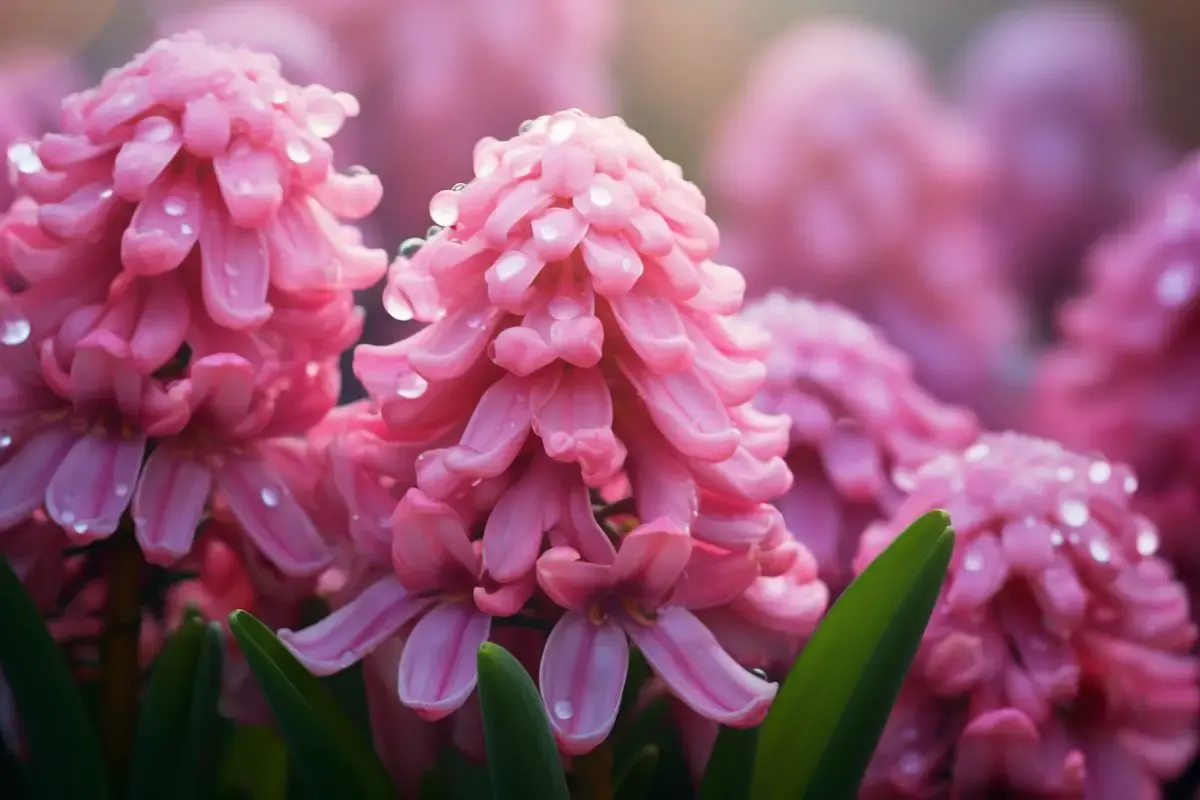
True to its name, this variety has gorgeous, soft pink blossoms. They add a delicate and romantic touch to any floral arrangement or garden. The ‘Pink Pearl’ always reminds me of my grandmother’s garden, where I first fell in love with hyacinths.
Hyacinth Care
Caring for hyacinths is a delightful journey. When you give them the right attention, they reward you with a spectacular display and intoxicating fragrance. Over the years, I’ve fine-tuned my approach to hyacinth care, and I’m thrilled to share some of my tried-and-true methods with you.
Planting
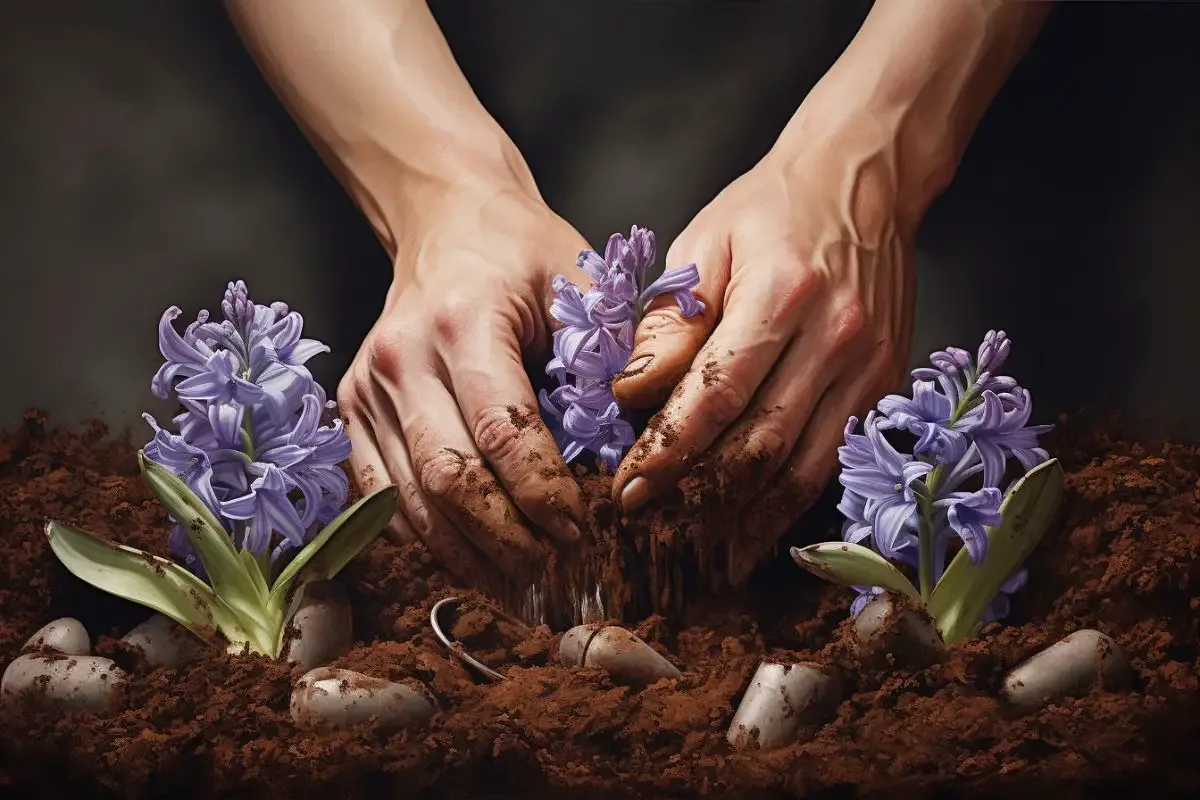
The best time to plant hyacinth bulbs is in the fall before the first frost. This gives them the cool period they need to bloom come spring.
- Choose firm, healthy bulbs with no signs of mold or damage.
- Dig a hole about 4-6 inches deep – I like to use a bulb planter for this.
- Place the bulb with the pointed end facing up.
- Cover with soil and water thoroughly.
- If you’re planting multiple bulbs, space them about 3 inches apart. This gives them enough room to grow without crowding.
Light
Hyacinths are fans of sunlight! They prefer full sun but can tolerate partial shade. In my garden, I’ve noticed that those planted in sunnier spots tend to produce more vibrant and fragrant blooms. However, if you’re growing them indoors, placing them near a window with bright, indirect light works wonders.
Soil
These beauties aren’t too picky about soil, but they do have their preferences. A well-draining soil mix is essential to prevent rotting. I’ve had the best luck with a mixture of standard garden soil, a bit of compost, and some sand to aid in drainage.
Water
When it comes to watering hyacinths, moderation is key. After planting, give them a good soak. But once they’re established, reduce watering. Ensure the soil is kept moist but not soggy. Overwatering can lead to bulb rot, a common mistake I see in many budding gardeners.
Temperature and Humidity
Cold winter chill is crucial for hyacinths – it helps them prepare for their spring debut. If you’re in a region with mild winters, consider giving your bulbs a pre-chill in the refrigerator for 12-14 weeks before planting. Come spring, they enjoy cooler temperatures ranging between 45°F to 60°F.
Indoor hyacinths prefer cooler conditions too, so avoid placing them near heaters or radiators. As for humidity, they aren’t too particular, but if your home is exceptionally dry, consider misting the plants occasionally.
Fertilizer
While hyacinths aren’t very demanding, a balanced fertilizer can give them a boost. I apply a slow-release bulb fertilizer in the fall when planting. Then, as the shoots start to appear in spring, I give them a light feeding with a water-soluble fertilizer. This two-step approach has worked wonders in my garden!
Pruning
Pruning hyacinths isn’t a tedious task, but it’s an essential step for the plant’s health and vitality. After your hyacinth has bloomed and you’ve enjoyed its fragrance and beauty, you’ll notice the flowers begin to fade. Here’s how I manage them post-bloom:
- Deadheading: Once the blooms fade, snip off the spent flower stalks. This prevents the plant from wasting energy on seed production and encourages better bulb growth for the following year.
- Leaves: Resist the urge to trim the leaves immediately after the flowers have faded. The foliage helps gather energy for the bulb. I usually wait until the leaves turn yellow and wither before gently removing them.
Propagating
One of the joys of gardening is propagating and sharing plants! With hyacinths, it’s relatively easy:
- Offsets: After a couple of years, you’ll notice baby bulbs, or “offsets,” forming around the main bulb. Once these offsets are a good size, usually in the fall, you can gently separate them from the mother bulb and plant them.
- Bulb Scaling: This method involves taking scales (sections) from a large hyacinth bulb and planting them to produce new bulbs. It’s a tad more advanced, but oh-so-rewarding!
How to Grow Hyacinths From Seed
While most gardeners propagate hyacinths from bulbs, growing them from seeds is an adventure worth embarking on:
- Harvesting Seeds: Allow a few of your hyacinth flowers to go to seed. Once the pods are mature and dry, collect the tiny seeds.
- Sowing: In the fall, sow the seeds in well-draining soil. They should be surface-sown, as they need light to germinate.
- Germination: With patience, you’ll see seedlings emerge in the spring. However, remember that growing hyacinths from seed is a longer journey. It might take a few years before you see blooms.
Growing in Pots
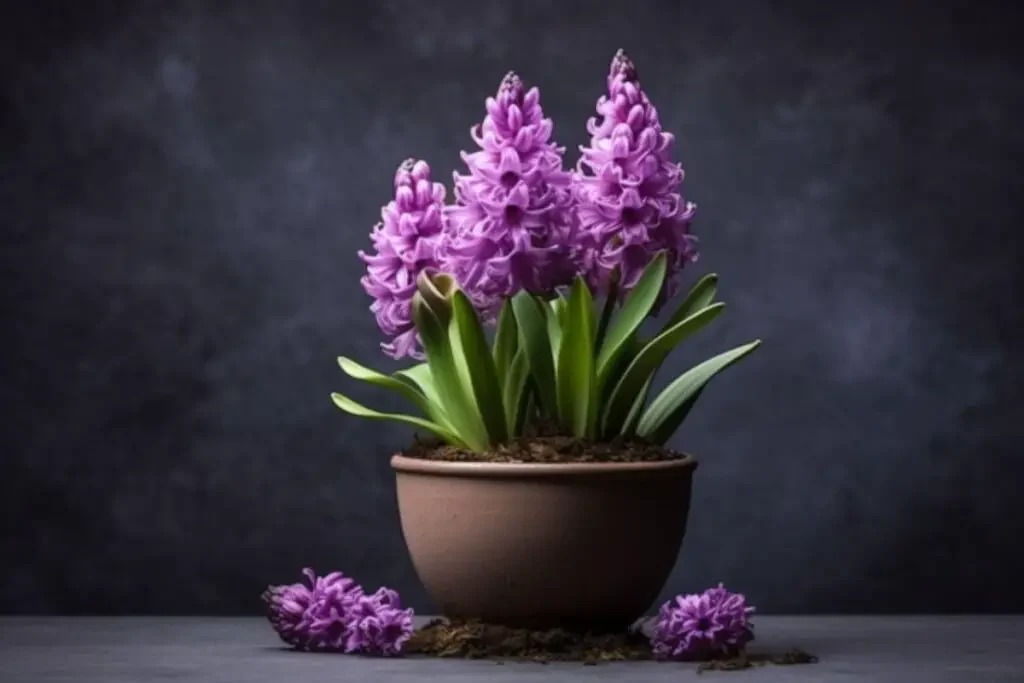
Hyacinths are splendid for container gardening! They bring a burst of spring indoors and are perfect for those with limited outdoor space. Here’s my personal approach to pot-grown hyacinths:
- Pot Selection: Ensure your pot has good drainage. This prevents waterlogging and potential bulb rot.
- Planting: Place some stones or broken pottery at the bottom for improved drainage. Fill the pot with soil and plant the bulbs with the tip slightly protruding from the soil surface. Space them a little closer than you would in the ground—about 2 inches apart.
- Watering: Keep the soil moist, but avoid overwatering. Bulbs in pots can rot more easily.
- Display: Once they bloom, display your pot in a cool, bright spot, and enjoy the spring show!
Overwintering
Hyacinths, with their alluring fragrance and delightful blooms, are a spring favorite for many gardeners, myself included. However, as these bulbs originate from regions with cold winters, overwintering them properly is essential for vibrant spring displays.
- In the Ground: If you’ve planted your hyacinths in the ground and you’re in USDA zones 4-8, they’ll typically overwinter without much fuss. Make sure the area doesn’t get waterlogged in winter; otherwise, the bulbs may rot.
- Mulching: To give your bulbs an extra layer of protection from harsh frosts, add a layer of mulch (like straw or leaves) around 2-3 inches thick over the planting area.
- Potted Hyacinths: For hyacinths in pots, move them to a cool, dark place, like a garage or basement, where the temperature remains just above freezing.
Transplanting
Sometimes, a change in garden design or overcrowded bulbs will necessitate transplanting your hyacinths. The best time to do this is when they’re dormant:
- When to Transplant: Fall, after the foliage has died back, is the ideal time.
- Digging Up: Use a spade to carefully lift the bulbs out of the ground, ensuring you don’t cut into them.
- Prepping the New Spot: Just as with initial planting, make sure the soil is well-draining. You can mix in some compost to give the bulbs a nutrient boost.
- Planting: Set the bulbs around 6 inches deep, with the pointy end facing up. Water them well to settle the soil.
Common Pests & Diseases
Just like all plants, hyacinths have their share of pests and diseases. Being proactive and vigilant can help keep these issues at bay.
Pests
- Aphids: These tiny pests can be found on the underside of leaves. Neem oil or insecticidal soap usually does the trick.
- Bulb Mites: These microscopic pests can cause the bulbs to rot. Ensure good soil hygiene and avoid planting in previously infected areas.
Diseases
- Basal Rot: This fungal disease causes the base of the bulb to rot. Make sure you plant in well-draining soil and avoid overwatering.
- Mosaic Virus: Displaying as yellow streaks on leaves, it can affect the flower’s color. There’s no cure for this, so it’s best to remove and dispose of affected plants.
Staying observant and catching these issues early is crucial. Over the years, I’ve learned that a little preventative care and attention to the garden can save a lot of heartaches later. Keep those green thumbs active and enjoy the delightful journey that is gardening

